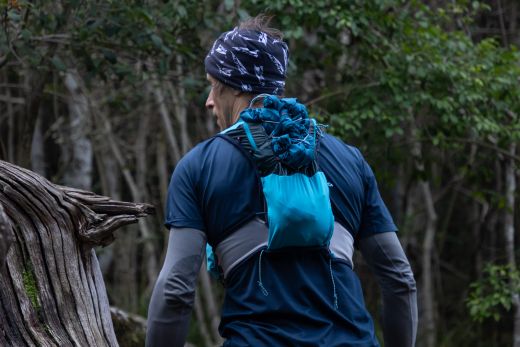For anything more than a short casual run, it helps to have something to carry your water, extra layer, and snacks. Enter the running vest or pack. I can’t remember what we did before the advent of these wonderful pieces of kit (Go thirty, hungry, and cold?), but it’s safe to say that longer trail runs weren’t nearly as easy or enjoyable back then. Today, with a dozen brands producing great running-specific vests and packs, there’s no shortage of options for trail runners. If anything, the only challenge is choosing between the many products out there. And that’s why this article exists – to help you narrow down your options based on your needs and preferences.
Capacity
Capacity can mean two things: space for water and space for gear. Some authors have written that you need X many litres of water for a run of a specific distance or X many litres of gear capacity if you run for a certain amount of time. But these guidelines have their limitations. They don’t take into account how your needs can vary according to the environment and conditions. A desert run can require lots of water but minimal gear, while a run through the rain-fed forests of the Pacific Northwest might require less water but more gear. To prepare properly for a run, you have to consider all factors.
Water
There are two factors that determine how much water you need to carry: the rate at which you have to replace lost fluids, and the distance between reliable water sources (or the length of a run if that’s shorter). You need to carry enough water to be able to replace liquids at your rate of perspiration until you reach the next water source. Depending on heat, level of exertion, and physical size (bigger people sweat more), that will be somewhere between 400 and 800 millilitres (13.5 - 27oz ) per hour. That means that you could have to carry as much as three litres on a four-hour stretch between water sources.
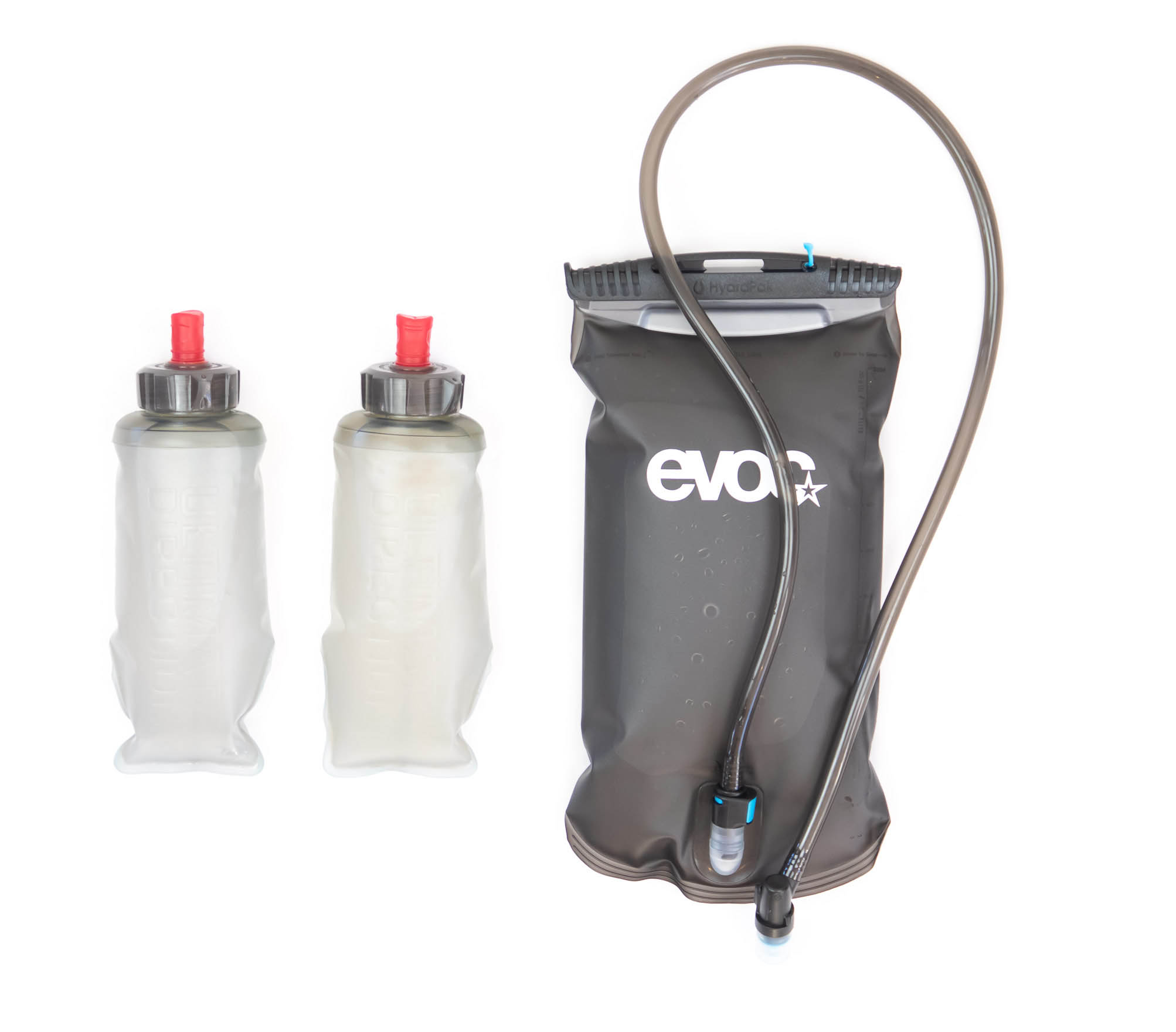
Not all vests are designed to carry this much water, so hydration capacity can be a big factor in vest choice. With bottles averaging around 500ml each, a bottle-only vest will carry about one litre, while a pack with a two-litre reservoir will carry three litres if it also has bottle pockets.
| hydration options | gear storage | pole keepers | |
|---|---|---|---|
| Salomon S / Lab Sense 2 | bottles | 1 L | no |
| Osprey Duro 1.5 | bottles + 1.5L reservoir | 1 L | yes |
| Camelbak Circuit Vest 50 oz | bottles + 1.5L reservoir | 3.5 L | no |
| Nathan VaporKrar 2.0 4L | bottles + 1.5L reservoir | 4 L | no |
| Ultimate Direction Marathon Vest V2 | bottles + 2L reservoir | 5.4 L | no |
| Altraspire Alpha 4.0 Race Vest | bottles + 2L reservoir | 6 L | yes |
| Osprey Duro 6 | bottles + 1.5L reservoir | 6 L | yes |
| Ultimate Direction Ultra Vest V5 | bottles | 10.8 L | yes |
| Camelbak Zephyr Vest | bottles + 1.5L reservoir | 11 L | yes |
| Nathan VaporKrar 12L | bottles + 1.6L reservoir | 12 L | no |
| Salomon Agile 12 | bottles | 12 L | yes |
| Altraspire Zygos 4.0 Pack | bottles + 2L reservoir | 14 L | ye |
Gear
The amount of gear you carry will depend much on the conditions, terrain, and length of a run. Most runners will, at the very least, carry a small stick of sunscreen and a light rain jacket or warm layer. In more demanding conditions and on longer runs, one could carry both garments, a light first aid or blister kit, a phone, a headlamp, and a water filter if water sources were questionable. And on runs into remote or unfamiliar areas, you might add a GPS or compass and map, and swap out your phone for a satellite messenger. Add a few bars and gels to this kit, and you could easily fill a 10-litre pack.
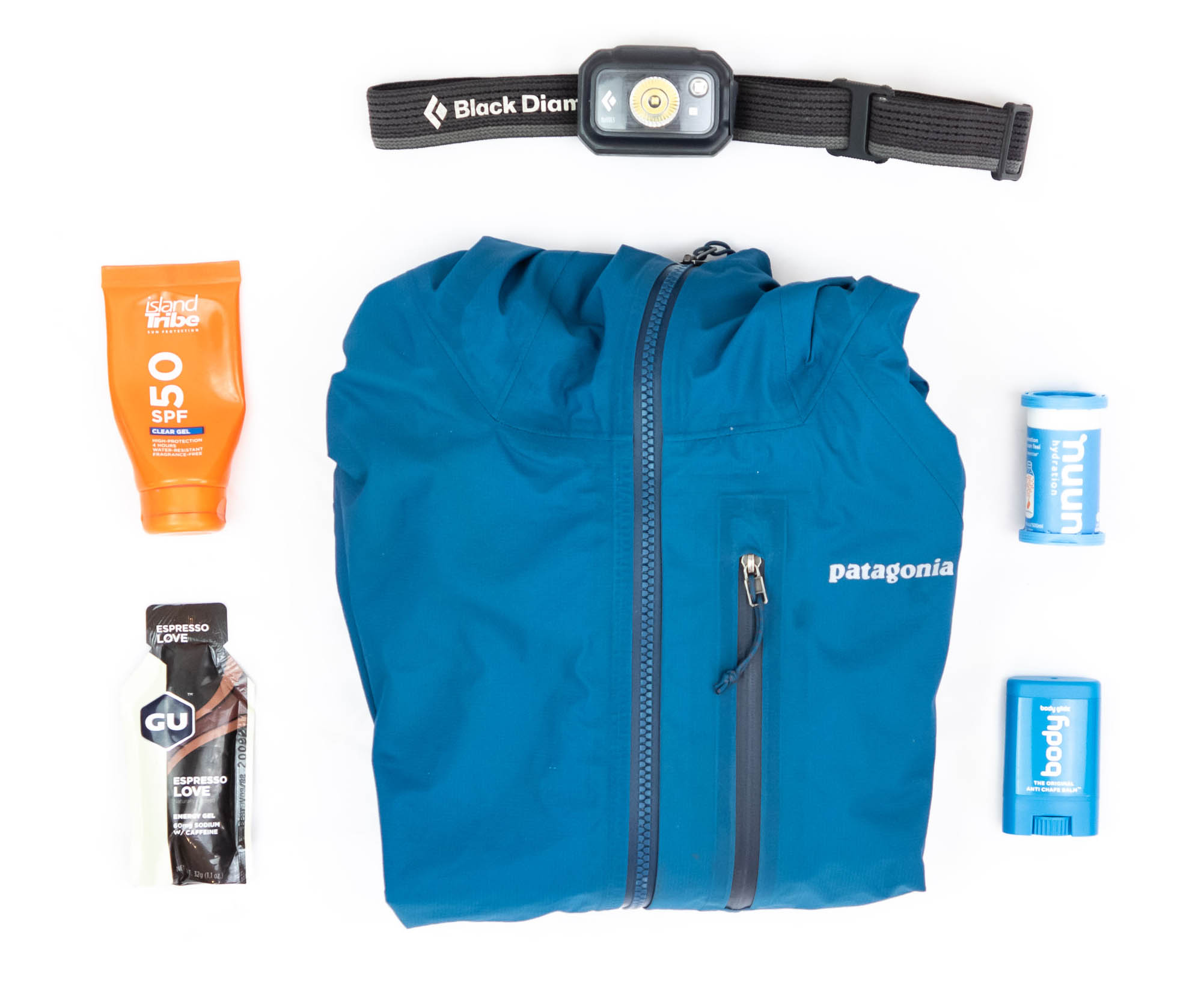
Of course, not all runners will need to carry this much gear, and you’ll need to figure how much you’ll likely take on a longer run. Some might wonder what’s the harm in having extra capacity just in case? Too much empty space in your pack can cause its contents to bounce with every stride. To avoid this and the resulting chafe, it’s best to choose a pack or vest with a gear compartment that you’ll fill on most runs. For some runners, there’s no such thing as an average run, and many find themselves owning two packs: a low capacity vest for short runs and a larger pack for adventures that take them further afield.
Water bottles vs. reservoir
If you anticipate needing to carry more than two litres of water, you’ll need a pack equipped with both a reservoir and water bottles. But if you only need to carry 1 to 1 ½ litres, you’ll be able to get by with just one of these systems. With bottle pockets being a standard feature on vests and packs, the question is whether or not you want a reservoir? This is largely a matter of personal preference – a decision that can be guided by the following factors.
It’s easier to monitor levels in a bottle
Bottles also make it easier to monitor liquid levels. With a reservoir, you have to take off your pack and reach into it to feel how much water you have left. With bottles, you know exactly how much you have left every time you take a sip.
Bottles are easier and faster to refill
Refilling a reservoir during a run isn’t nearly as easy as refilling water bottles. Unless you have some kind of vessel to scoop up water and pour it into your reservoir, you will have to remove the reservoir from the pack, dunk it in the stream or river, and then return it, wet, to your pack. In fact, even if you have a cup or bottle for scooping up water, you might still have to remove the reservoir from the pack to refill it if space is tight and it doesn’t expand when water is poured into it. This, for me, is the biggest disadvantage of a reservoir.
You can expand the capacity of bottle-only packs
If your pack only takes bottles, you can still expand your water capacity by putting a water pouch in the main compartment. This can be especially useful if it’s part of a squeeze filtration system like the Sawyer Mini Squeeze Filter. With this system, you can take water from a stream with the water pouch, and then, with the filter attached, squirt it into your bottles, removing bacteria as you do so. This is my preferred method as it works well with my bottle-only pack, the Ultimate Direction Ultra Vest.
Bottles can be hard or soft
Most hydration vests come with soft water bottles. These are more comfortable to carry since they conform to your body. And they reduce sloshing, a problem experienced with hard bottles. The disadvantage of soft bottles is that they aren’t as puncture resistant as hard bottles, and some gear gurus point out that you could puncture a soft bottle if you tripped and fell on it. Solution: don’t fall. Most runners carry soft bottles and agree that their ‘weakness’ is a small price to pay for doing away with the loud and constant sloshing of water in hard bottles.
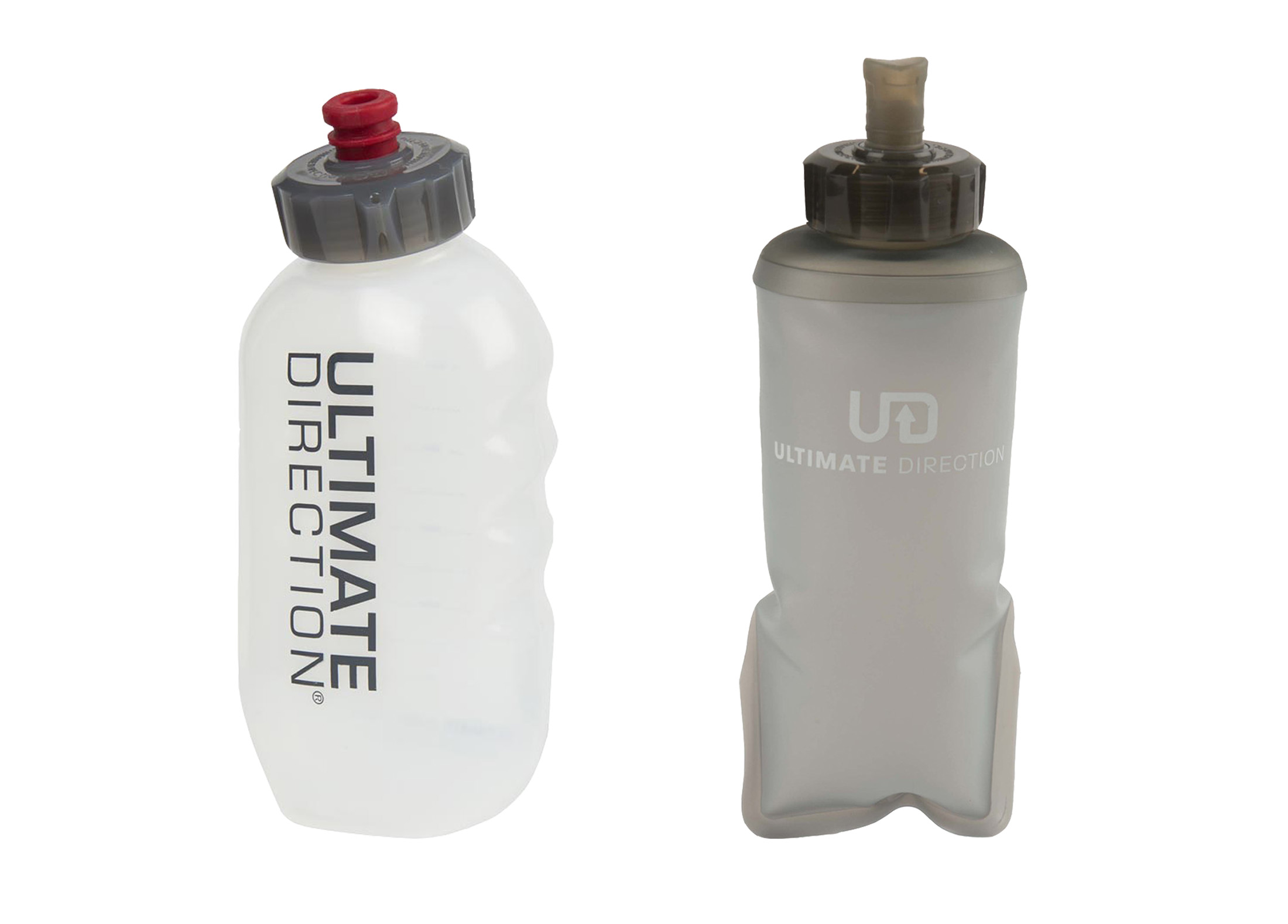
Bottles can make a pack feel more balanced
Bottles free up space in the main compartment and balance a pack by shifting weight forward and away from your back, where you’re likely to already be carrying gear. This improved weight distribution can make a vest feel more snug – it won’t shift as much – and can reduce bouncing. Some people aren’t too bothered by the extra weight on their backs and would prefer that to having to remove and return a bottle to its pocket every time they want a sip.
Bottles add versatility
Many runners like to have both an electrolyte solution and plain water to sip on. With bottles, you can have one type of drink in each bottle. Not so with most reservoirs, which force you to choose one type of liquid. I say ‘some reservoirs’ because there are a few models that have two chambers and two drink tubes. The problem is that there don’t seem to be any hydration packs with two tube traps. Also, how much harder would it be to remove a reservoir with two drink tubes?
A reservoir can require less faffing while you are running
One of the advantages of a reservoir is that you can take a drink hands-free, but that’s more important to mountain bikers than runners. The real advantage of a reservoir while running is that it’s easy to get the tube to your mouth and return it to the tube trap (if you use one). Bottles, on the other hand, have to first be pulled out of their pockets, and then – the hard part – be returned to the vest. This isn’t difficult when you’re standing still but can involve some faffing if performed while running.

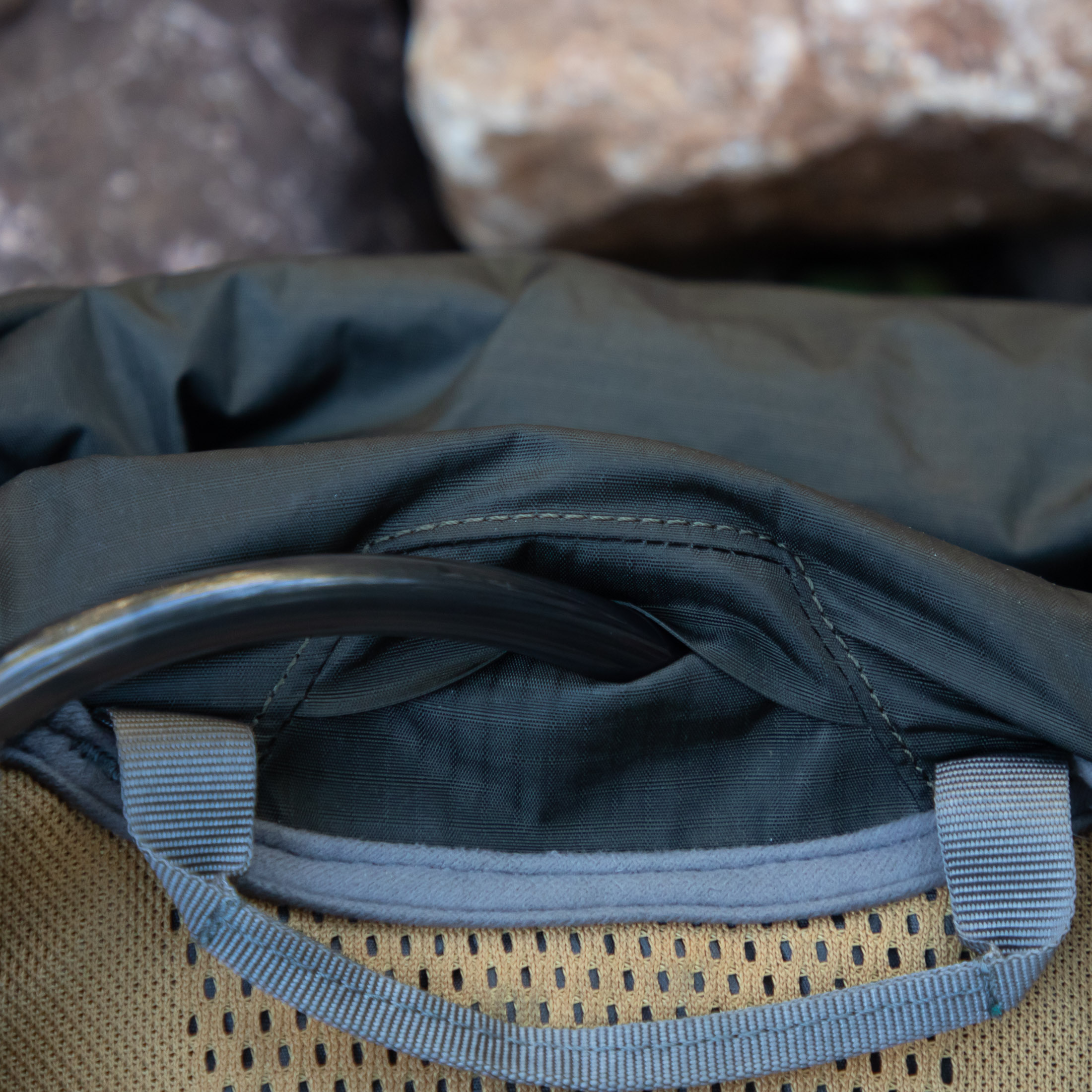
A reservoir has more capacity
If you don’t anticipate needing more than two litres of water for a run, the disadvantage of a reservoir – that it’s harder to refill – isn’t really an issue at all. In this case, a runner might prefer the convenience of having her water in a single large receptacle, as opposed to having a pair of bottles in the chest pockets and another larger soft flask in the gear compartment. Tip: If you choose to use a reservoir, you can limit how much the water sloshes about by sucking the excess air out of the reservoir after you have refilled it.
Features
Hydration vests come with a variety of features that add to their gear capacity, comfort, and safety. Depending on your needs, you might look for the following in your next hydration pack.
Pockets
Besides the main compartment, most vests include a variety of pockets to hold frequently used smaller items like gels, a sunscreen stick, and your phone. Consider the positioning of the pockets and make sure they’re easy to reach. Ideally you wouldn’t have to stop moving to grab a snack or apply more sunscreen. Also, consider the pocket closures. Zippers will ensure that important items don’t fly out when you stumble, but they’re usually a bit harder to get into and out of than stretchy pockets.
Trekking poles keepers
If you run with trekking poles, you’ll want to look for a vest or pack with trekking pole keepers. In some cases these allow you to attach your pole to the chest straps in a vertical position. On other models, the poles are secured to the bottom of the pack in a horizontal orientation. Regardless of the design, this feature should allow you to stow away and take out your folded trekking poles with minimal fuss.
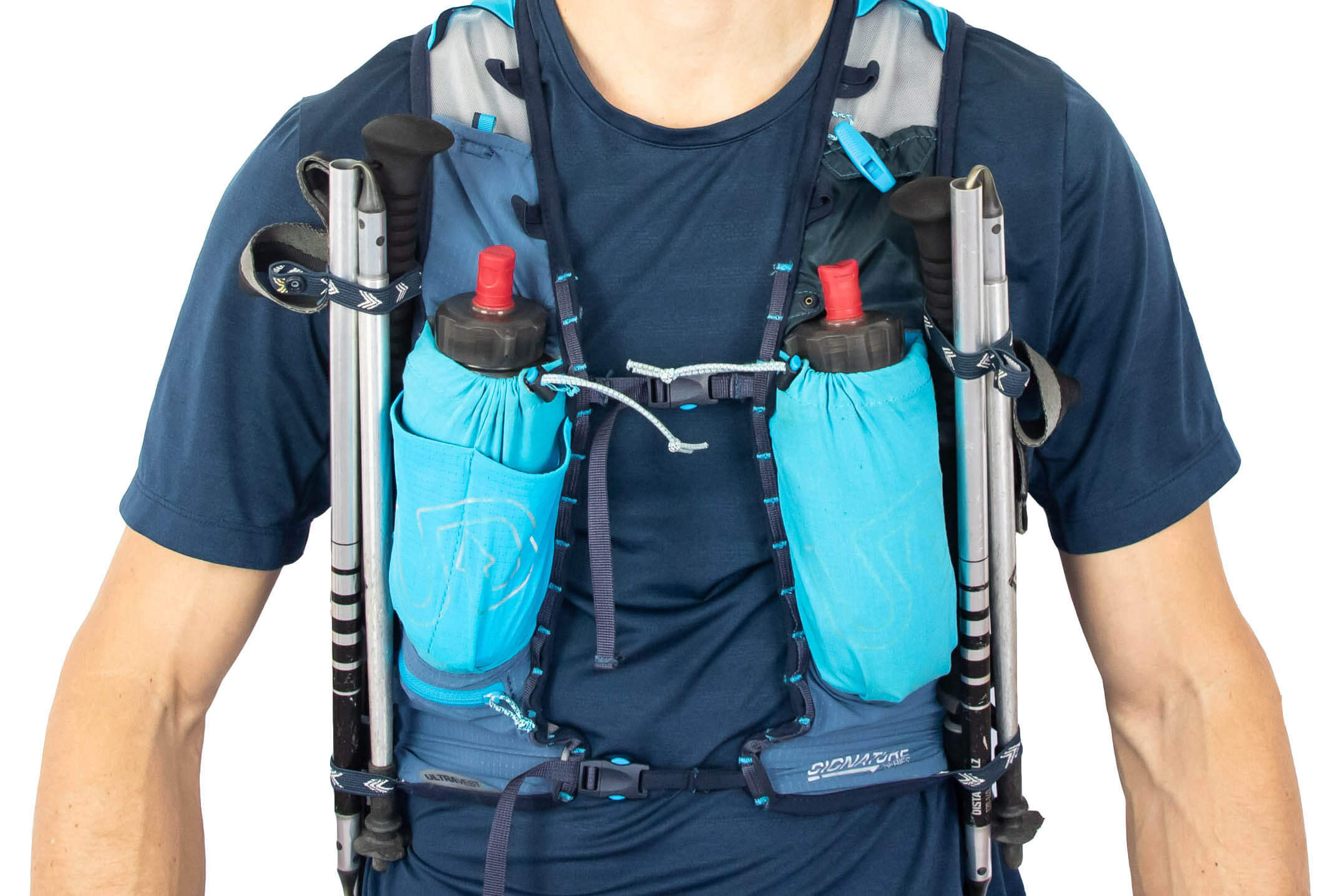
Mesh panels
Most packs are made of light, quick-drying, and breathable material, but breathability can be improved further by incorporating mesh into certain contact areas. If you tend to run hot, look for mesh panels on the back of a vest and in the shoulder straps and waist area. The contact area on my preferred pack is almost entirely mesh and breathes well even in very warm weather.
Elastic compression and gear stash
The zig-zagging elastic cord on the bag of some packs performs two functions: it allows you to secure damp garments to the outside of the pack, where they can air out and dry; and it reduces the amount of dead space in the main compartment, which can help prevent kit from bouncing around inside.
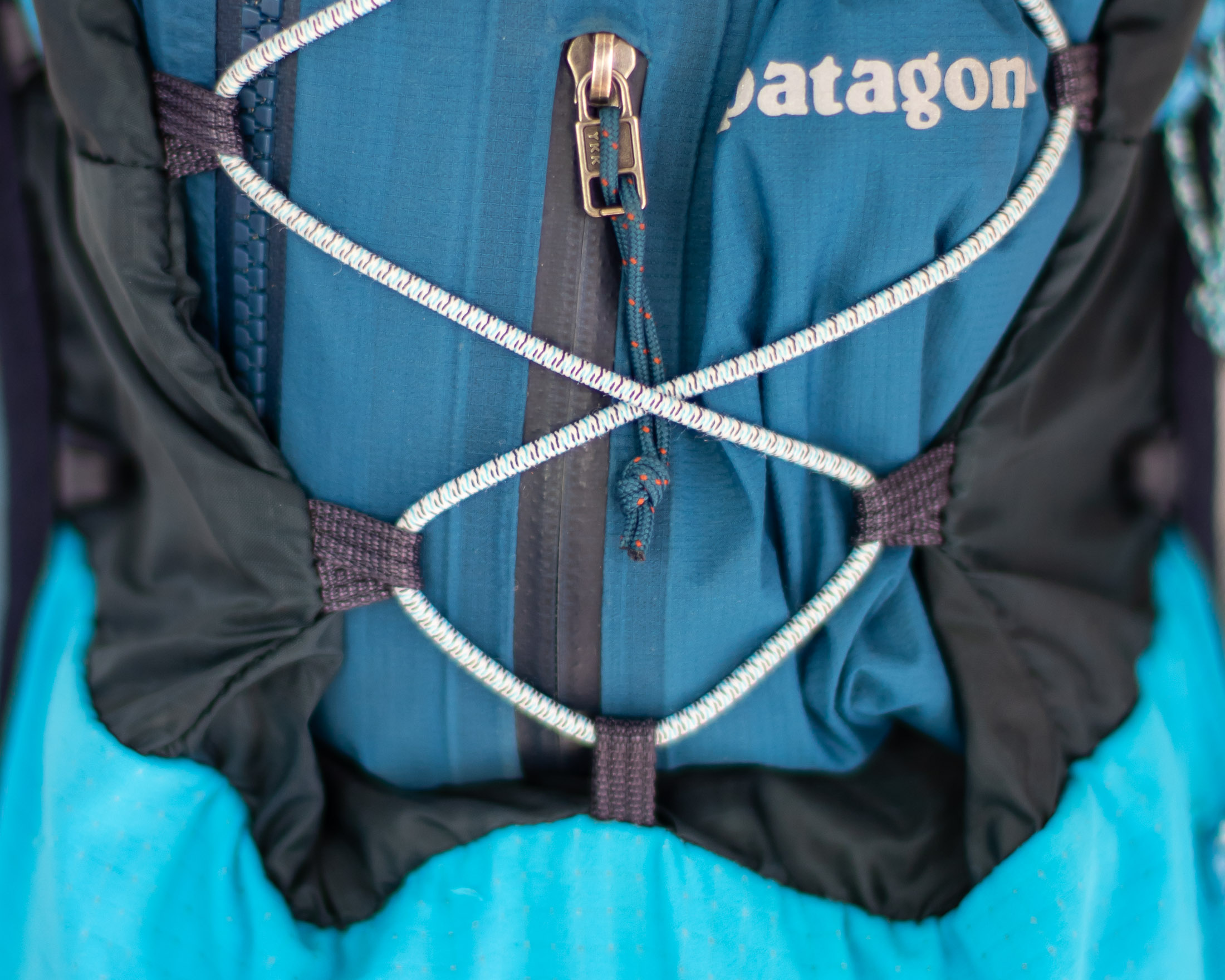
Reflective strips
Many vests feature reflective strips to make you more visible to motorists and other road users during nighttime runs. And if you don’t go anywhere near a road, it’s still good to know that you will be more visible to runners with headlamps. Still, don’t rely on only a little reflective tape to make you visible. If you plan to run in the dark, it would be wise to clip a light or two to your vest to ensure that other trail and road users see you.
Whistle
Some vests include a whistle on a sternum strap. Whistles are much louder than the human voice, and their sound can carry much further than shouting if you need help. It’s also easier to whistle when your throat is parched and you’re tired. That said, not all whistles are equal, and the one on your new vest might not be loud enough to be very useful. I definitely wouldn’t consider it a deal breaker if a vest didn’t have one.

Sizing and fit
A running vest needs to fit as snugly as possible to help prevent chafing. And that means getting the shape and size just right. Most manufacturers give guidelines based on common measurements, but you should also consider the following when trying on different models and sizes.
Snug but not constrictive
You want a vest to be as snug as possible without it being constrictive. If there is any loose or excess fabric around the shoulders or under your arms, it might be too big. And if it’s uncomfortable or feels restrictive when you take deep breaths, it’s probably too small. Also be aware of any obvious pressure points as these could become chafing hotspots. On that note, avoid wearing clothes with thick seams as these will only worsen the effects or rubbing.
Freedom of movement
Running packs differ from those made for mountain biking in that they’re designed to allow your arms to swing freely, and multi-sport hydration packs should do that same. Still, make sure that your new pack doesn’t restrict your movement or chafe you under your arms when your arms move naturally with your stride. If you intend to use trekking poles, you’ll also want to check that they don’t cause any issues when attached to the vest.
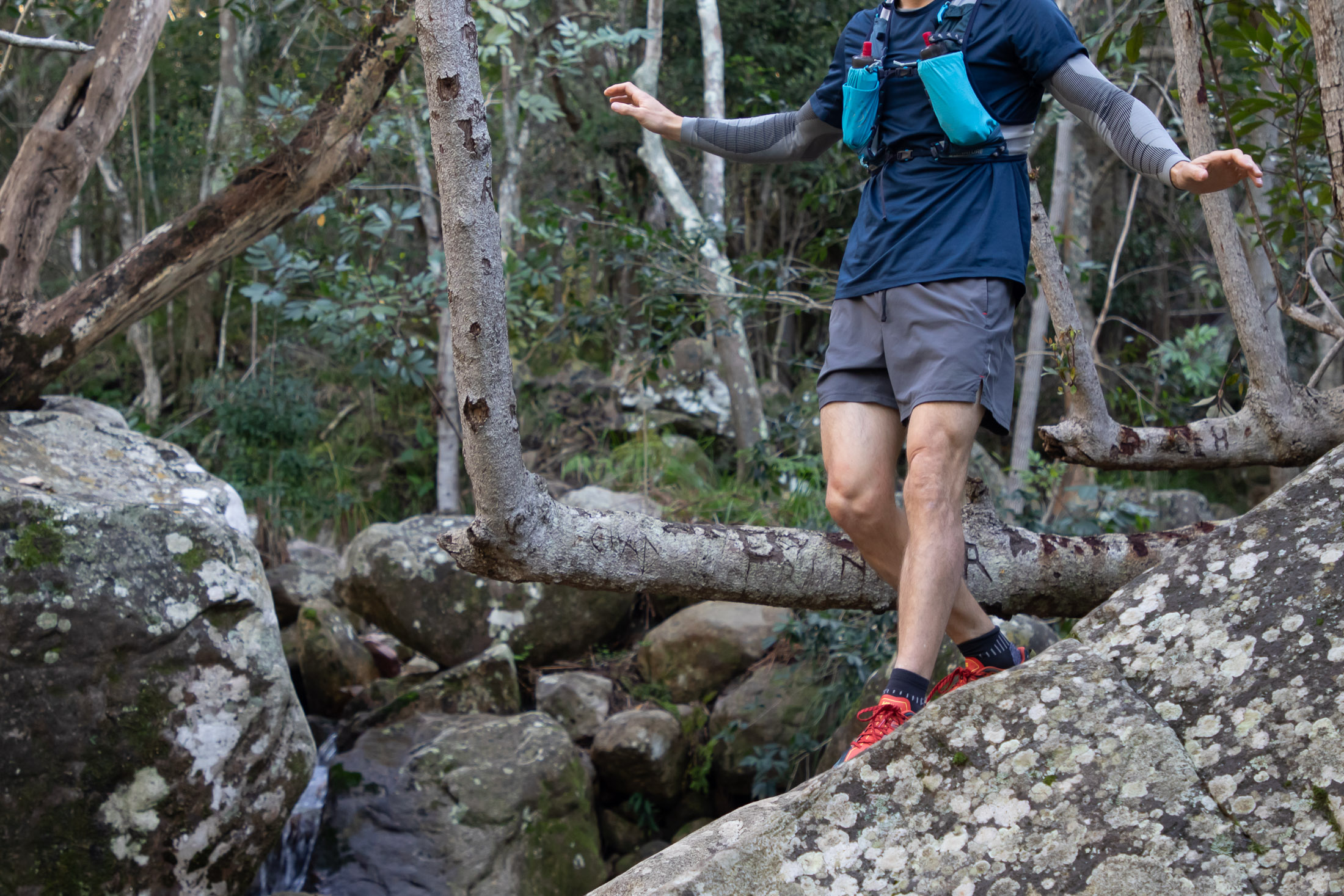
Room for adjustment
The adjustability of the straps on a vest are also worth considering. With the vest properly fitted, these would ideally be in the middle of their adjustment range. If they’re at one extreme or the other, you might have the wrong size and could find yourself with a vest too big or small or you lose or gain weight. Wearing a few extra layers under your vest might also test the limits of its adjustability range if it’s not the right size.
Gender-specific running vests
Many women find that a women-specific vest fits better. Women's vests have more room in the chest and narrower shoulders while also being shorter overall. Others find that a unisex or men’s vest fits just fine. My advice is to try a vest on in-store first, even if you’re going to buy online. Of course, your conscience might then get the better of you and guilt you out for not buying it from the store that let you try it on.
Get more advice from this gearhead
You now know everything you need to know about running vests and packs. But don’t stop here. On this website you’ll find many more in-depth gear guides on everything from trekking poles to headlamps as well as many more how-to articles. See the links below for favourites or, even better, sign up for my newsletter to get all the latest from Trail & Crag delivered straight to your inbox.
